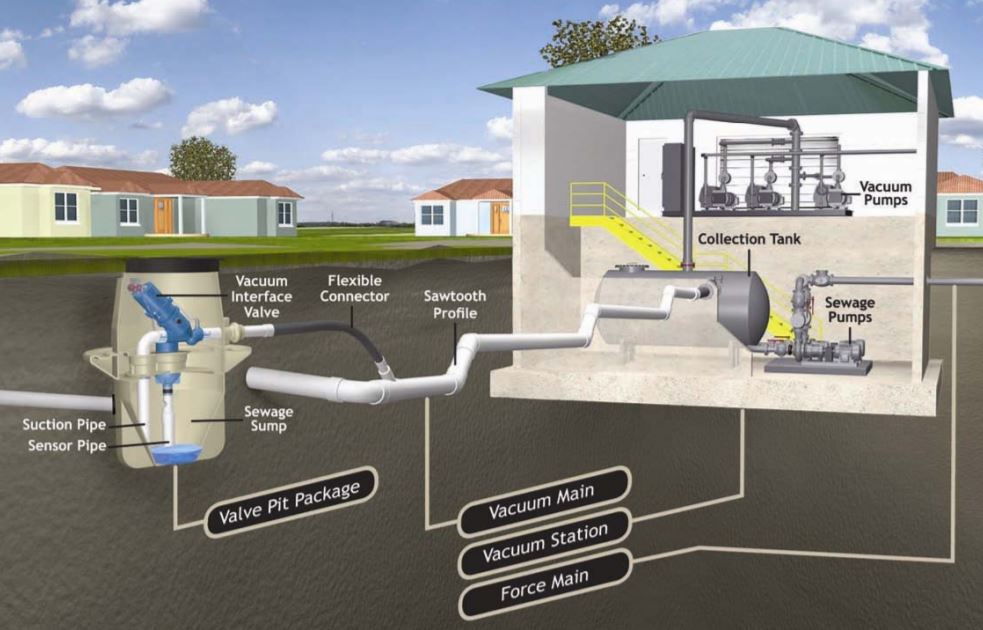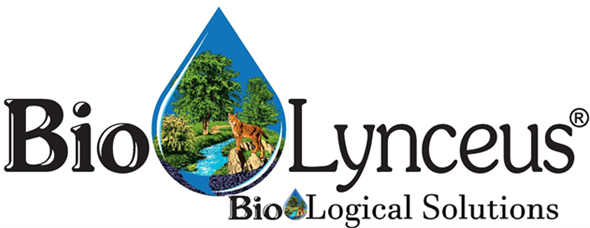Collection System 0.02 MGD
Sewer systems are prone to accumulate hydrogen sulfide (H2S) gas. This compound is produced by sulfate reducing bacteria (SRB) in the process of metabolizing organic matter under anaerobic conditions.1 Substantial quantities of H2S can be produced in systems with long pipe sections because these lines have high wastewater detention times. Wastewater utilities are obligated to mitigate H2S, because the gas gives off unpleasant odors, can be hazardous to workers’ health, and contributes to infrastructure corrosion.

Figure 1. AIRVAC vacuum sewer system schematic (Retrieved from https://pncwa.memberclicks.net/ assets/2010ConfTechPresentations/Session04/2010%20 pncwa-%20session%204-1%20-%20collections%20-%20philip%20smith.pdf).2
Bioaugmentation can be used to reduce H2S production in collection systems. By inoculating wastewater streams with concentrated cultures of bacteria, sulfide producing activity can be limited through resource competition. The following case study demonstrates that H2S can be reduced in collection systems using BioLynceus® ProBiotic Scrubber® OCC (PBOCC).
A mutual domestic water consumer association (MDWCA) in New Mexico was experiencing issues with high H2S concentrations in the discharge side of their AIRVAC
vacuum sewer system. The collection infrastructure averaged 0.02 MGD and was two miles long. The system was accumulating H2S gas in the force main at concentrations
of over 700 ppm.
Prolific gas formation was attributed to high wastewater detention time. Due to substantial H2S levels, malodors were prominent around the force main and manholes. Additionally, H2S accumulation began corroding the collections infrastructure, leading
to expensive repairs and replacements. The MDWCA was also concerned for the safety of their staff.
Motivated to reduce H2S, the MDWCA employed BioLynceus® to design a bioaugmentation program for the collection system. PBOCC was dosed through a feed
pump at the lift station ahead of the force main. PBOCC provided live cultures of diverse wastewater bacteria to the force main flows.
Within two months, average H2S concentrations in the headspace of the force main dropped from 500 to less than 10 ppm. Reducing H2S also decreased harsh odors and corrosive acid formation in the collection system. More importantly, H2S associated health risks were reduced for the MDWCA sewer workers.
The implementation of PBOCC limited SRB in the sewer system, significantly reducing H2S and associated issues.
BioLynceus® ProBiotic Scrubber® OCC helps reduce H2S in sewer systems.
1 Gerardi, M. (2016). Wastewater Bioaugmentation and Biostimulation. Lancaster, Pennsylvania: DEStech Publications, Inc. Pp. 20-21. https://www.amazon.com/Wastewater-Bioaugmentation-Biostimulation-Michael-Gerardi/dp/1932078789
2 Smith, P. P.E. (2010, October 24-27). Miles Crossing Vacuum Sewer System Project. [PowerPoint presentation]. Pacific Northwest
Clean Water Association. https://pncwa.memberclicks.net/assets/2010ConfTechPresentations/Session04/2010%20pncwa-%20session%204-1%20-%20collections%20-%20philip%20smith.pdf
